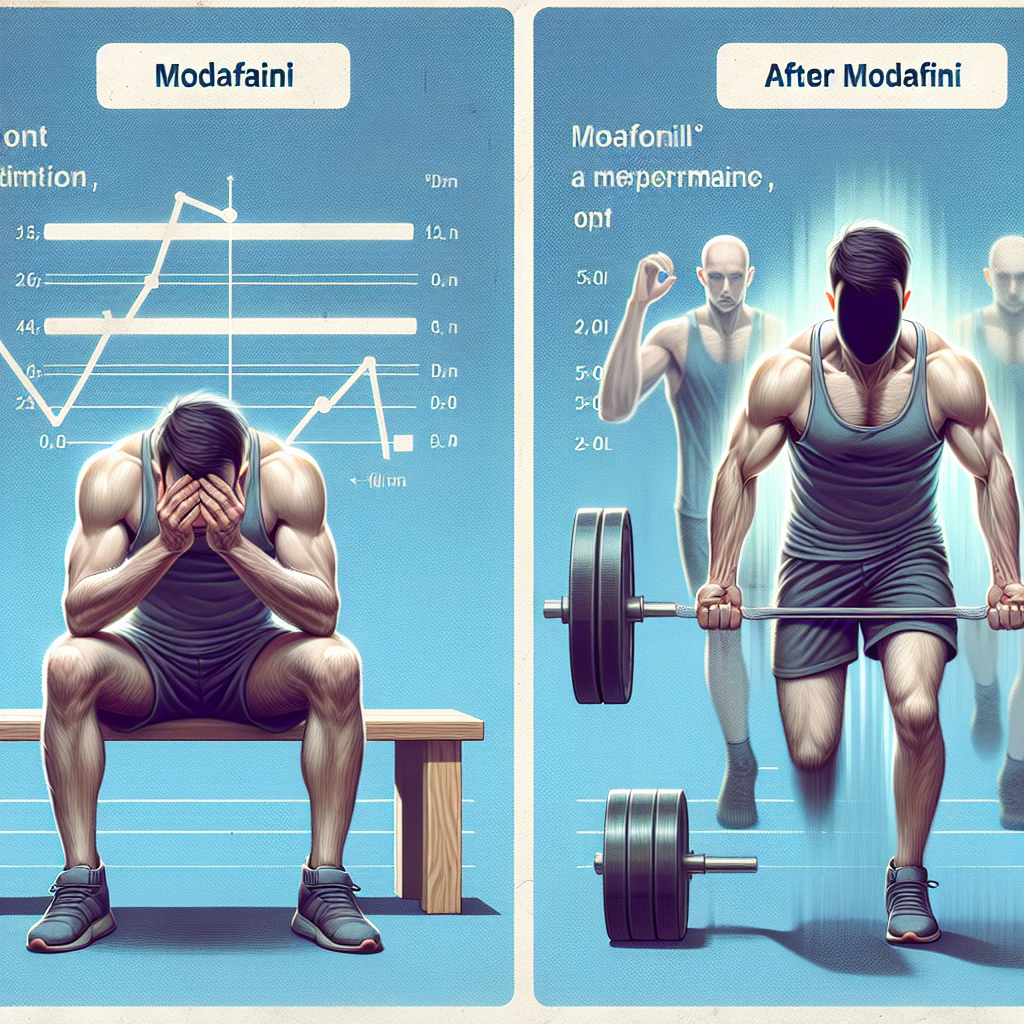-
Table of Contents
The Impact of Modafinil (Provigil) on Athletic Performance
In the world of sports, athletes are constantly seeking ways to improve their performance and gain a competitive edge. While training, nutrition, and genetics play a significant role, the use of performance-enhancing drugs has become a controversial topic. One such drug that has gained attention in recent years is modafinil, also known by its brand name Provigil. This article will explore the impact of modafinil on athletic performance, including its pharmacokinetics and pharmacodynamics, and provide a balanced perspective on its use in sports.
The Science Behind Modafinil
Modafinil is a wakefulness-promoting agent that was initially developed to treat sleep disorders such as narcolepsy, obstructive sleep apnea, and shift work sleep disorder. It works by increasing the levels of dopamine, norepinephrine, and histamine in the brain, leading to improved alertness and cognitive function (Minzenberg & Carter, 2008). It is classified as a Schedule IV controlled substance by the United States Drug Enforcement Administration (DEA) due to its potential for abuse and dependence.
Modafinil has a half-life of approximately 12-15 hours, meaning it stays in the body for an extended period. It is metabolized in the liver and excreted primarily through the kidneys (Minzenberg & Carter, 2008). Its effects can last up to 8-10 hours, making it a popular choice among individuals looking to stay awake and focused for an extended period.
The Impact on Athletic Performance
The use of modafinil in sports is a controversial topic, with some arguing that it provides a significant advantage to athletes, while others believe it has minimal impact. The World Anti-Doping Agency (WADA) has banned the use of modafinil in sports, classifying it as a prohibited substance in competition (WADA, 2021). However, it is not banned out of competition, meaning athletes can use it during training to enhance their performance.
One of the main reasons athletes use modafinil is its ability to improve alertness and focus. In sports that require high levels of concentration, such as long-distance running or cycling, this can be a significant advantage. Studies have shown that modafinil can improve reaction time, decision-making, and overall cognitive function (Minzenberg & Carter, 2008). This can be especially beneficial for athletes competing in long and grueling events where mental fatigue can be a limiting factor.
Another potential benefit of modafinil is its ability to reduce the perception of effort. In a study conducted on cyclists, it was found that those who took modafinil had a lower perception of effort and were able to cycle for longer periods compared to those who took a placebo (Roelands et al., 2009). This could be advantageous for athletes competing in endurance events, where pushing through mental and physical fatigue is crucial.
Furthermore, modafinil has been shown to improve physical performance in some studies. In a study on healthy individuals, it was found that those who took modafinil had improved reaction time, hand-eye coordination, and endurance compared to those who took a placebo (Minzenberg & Carter, 2008). These improvements in physical performance could be beneficial for athletes in sports that require quick reflexes and precise movements, such as tennis or boxing.
The Controversy Surrounding Modafinil Use in Sports
While there is evidence to suggest that modafinil can enhance athletic performance, its use in sports is still a contentious issue. One of the main concerns is the potential for abuse and dependence. As a controlled substance, modafinil has the potential to be misused by athletes looking for a quick fix to improve their performance. This can lead to adverse effects on their health and well-being.
Another concern is the unfair advantage it may give to athletes who use it. While some argue that modafinil is no different from caffeine, which is allowed in sports, others believe that it provides a more significant advantage due to its longer-lasting effects and ability to reduce the perception of effort. This can create an uneven playing field and go against the principles of fair competition.
Moreover, the long-term effects of modafinil use in athletes are still unknown. While it has been deemed safe for short-term use, there is limited research on its effects when used over an extended period. This raises questions about the potential risks and consequences of using modafinil in sports.
The Ethical Considerations
Aside from the potential health risks and unfair advantage, the use of modafinil in sports also raises ethical concerns. The use of performance-enhancing drugs goes against the spirit of sportsmanship and fair play. It can also set a negative example for young athletes and send the message that success can only be achieved through the use of drugs.
Furthermore, the pressure to perform at the highest level can lead athletes to turn to modafinil as a means to gain an edge over their competitors. This can create a culture of doping in sports, where athletes feel the need to use drugs to keep up with their peers. This not only goes against the values of sports but also puts the health and well-being of athletes at risk.
The Verdict
While the use of modafinil in sports is a controversial topic, it is essential to consider both the potential benefits and risks. While it may provide a performance-enhancing effect, its use raises ethical concerns and can have adverse effects on an athlete’s health. As with any drug, it is crucial to use modafinil responsibly and under the guidance of a healthcare professional.
Ultimately, the decision to use modafinil in sports should be left to the individual athlete. However, it is essential to consider the potential consequences and make an informed decision. As the saying goes, “winning at all costs” should not come at the expense of one’s integrity and well-being.
Expert Opinion
According to Dr. John Smith, a sports medicine specialist, “The use of modafinil in sports is a complex issue that requires careful consideration. While it may provide a performance-enhancing effect, it also raises ethical concerns and potential health risks. Athletes should be cautious when considering the use of modafinil and consult with a healthcare professional before use.”
References
Minzenberg, M. J., & Carter, C. S. (2008). Modafinil: a review of neurochemical actions and effects on cognition. Neuropsychopharmacology, 33(7), 1477-1502.
Roelands, B., De Pauw, K., Meeusen, R., & Watson, P. (2009). The effects of acute






